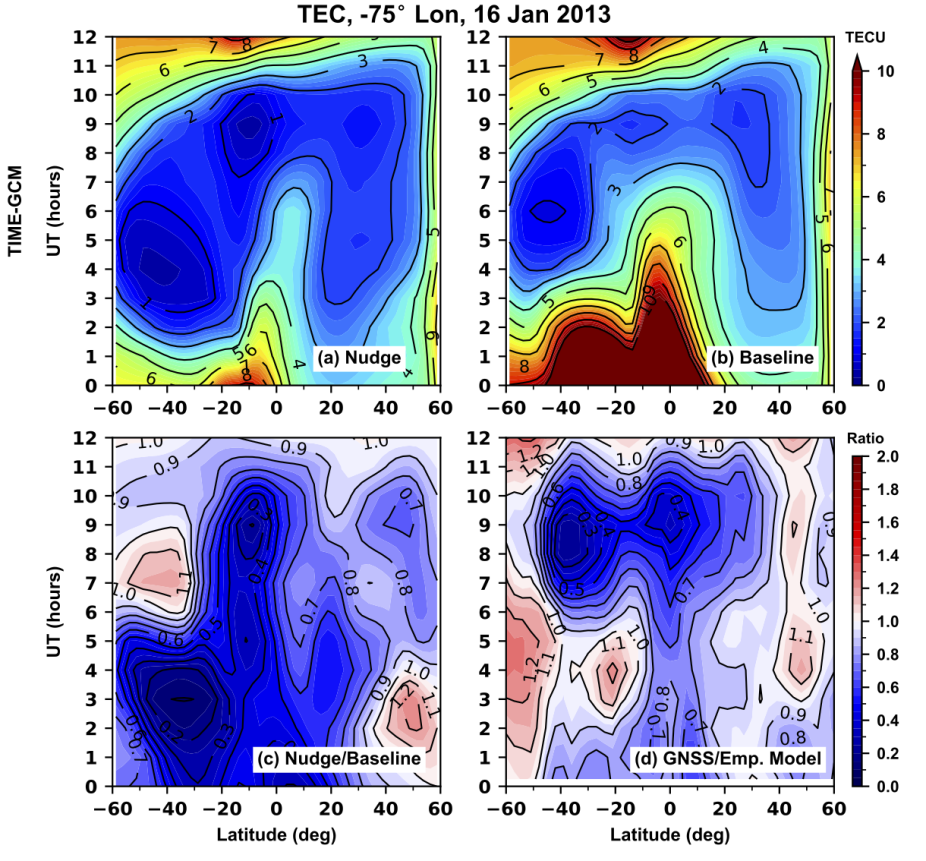
Total electron content from −75 degrees longitude on 16 January 2013 as a function of latitude and universal time. Shown are TEC values from TIME-GCM with realistic lower atmosphere forcing from NAVGEM-HA (Nudge, a), TIME-GCM with climatological lower boundary forcing (Baseline, b), TIME-GCM Nudge to Baseline TEC ratio (c), the data to empirical model ratio from GNSS TEC (d). The results show that the nudged model with realistic lower boundary forcing can reproduce nighttime TEC depletions seen in the GNSS observations.
Journal of Geophysical Research: This study focuses on understanding what drives the previously observed deep nighttime ionospheric hole in the American sector during the January 2013 sudden stratospheric warming (SSW). Performing a set of numerical experiments with the Thermosphere-Ionosphere-Mesosphere-Electrodynamics General Circulation Model (TIME-GCM) constrained by a high-altitude version of the Navy Global Environmental Model, we demonstrate that this nighttime ionospheric hole was the result of increased poleward and down magnetic field line plasma motion at low and midlatitudes in response to altered F-region neutral meridional winds. Thermospheric meridional wind modifications that produced this nighttime depletion resulted from the well-known enhancements in semidiurnal tidal amplitudes associated with SSWs in the upper mesosphere and thermosphere. Investigation into other deep nighttime ionospheric depletions and their cause were also considered. Measurements of total electron content from Global Navigation Satellite System receivers and additional constrained TIME-GCM simulations showed that nighttime ionospheric depletions were also observed on several nights during the January-February 2010 SSW, which resulted from the same forcing mechanisms as those observed in January 2013. Lastly, the recent January 2021 SSW was examined using Modern-Era Retrospective Analysis for Research and Applications, Version 2, COSMIC-2 Global Ionospheric Specification electron density, and ICON Michelson Interferometer for Global High-Resolution Thermospheric Imaging horizontal wind data and revealed a deep nighttime ionospheric depletion in the American sector was likely driven by modified meridional winds in the thermosphere. The results shown herein highlight the importance of thermospheric winds in driving nighttime ionospheric variability over a wide latitude range.